This article was co-authored by Tu Anh Vu, DMD and by wikiHow staff writer, Amy Bobinger. Dr. Tu Anh Vu is a board certified dentist who runs her private practice, Tu's Dental, in Brooklyn, New York. Dr. Vu helps adults and kids of all ages get over their anxiety with dental phobia. Dr. Vu has conducted research related to finding the cure for Kaposi Sarcoma cancer and has presented her research at the Hinman Meeting in Memphis. She received her undergraduate degree from Bryn Mawr College and a DMD from the University of Pennsylvania School of Dental Medicine.
There are 13 references cited in this article, which can be found at the bottom of the page.
This article has been viewed 142,841 times.
Have you ever noticed a sticky buildup on your teeth when it's time to brush? This is called plaque, and if it's not brushed away, it can harden into a substance called tartar. Tartar is a rough, bumpy deposit along the gum line, and it can lead to gum disease if it's not treated. Although the only way to fully remove tartar is a professional cleaning at the dentist, you can help prevent and remove tartar yourself with proper brushing and flossing, monitoring your diet, and using an antiseptic mouthwash after you eat.
Steps
Brushing Your Teeth the Right Way
-
1Brush your teeth at least twice a day. Since tartar is caused by plaque buildup, it's important to remove plaque by brushing your teeth for about 2 minutes at least twice every day.[1]
- Wait about 30 minutes after you eat before you brush, since eating can soften the enamel on your teeth. If you brush too soon after eating, you can remove enamel, which will weaken your teeth over time.[2]
-
2Brush the front, back, and chewing surface of your teeth. Make sure to brush every side of each tooth to fully remove plaque. If you're using a manual toothbrush, hold the brush at a 45-degree angle to your gums. For an electric toothbrush, follow the manufacturer's instructions to ensure you are using the brush correctly.[3] Board-certified dentist Tu Anh Vu recommends "using a toothbrush with soft or extra-soft bristles to prevent abrasion." Vu also suggests "brushing your teeth in a circular motion rather than scrubbing, which can cause your gum line to recede."
- Use a toothbrush approved by the American Dental Association (ADA), as these must undergo a variety of safety and quality control tests.[4]
- Be sure to brush your tongue to remove bacteria there as well.
Advertisement -
3Use a toothpaste with fluoride and tartar control. Fluoride is a mineral that strengthens tooth enamel and helps reverse acid damage. According to board-certified dentist Tu Anh Vu, it also "helps re-mineralize the enamel on your teeth, which can help prevent future cavities." Your toothpaste should always contain fluoride, even if you live in an area where fluoride is added to the drinking water. You should also look for a toothpaste with tartar control. These use chemical compounds or antibiotics to destroy plaque, which prevents tartar buildup.[5]
-
4Add baking soda to your toothpaste once a week. When you add baking soda to your toothpaste, it can destroy plaque, whiten your teeth, and fight bad breath. Pour a little baking soda into a dish and dip your moistened toothbrush into it before adding your toothpaste.[6]
- Using baking soda too often can lead to enamel damage, so do this about once a week.
-
5Rinse with an antiseptic mouthwash after brushing. Antiseptic mouthwashes help kill the bacteria which feed plaque. By destroying these, you're making it harder for plaque to grow and form into tartar.[7]
Using Other Methods to Remove Tartar
-
1Floss once a day. Plaque can build up between your teeth, where it's hard to remove simply by brushing. Use regular dental floss or y-shaped floss picks to remove food particles and plaque buildup so tartar can't form between your teeth.[8] If you see blood when you floss, board-certified dentist Tu Anh Vu explains that "your gums are inflamed, and that you may need to floss a little more consistently." Vu also advises that "your gums may bleed if you floss too aggressively, but they will heal."
-
2Use a dental scraper once a week. A dental scraper, or dental scaler, is a small tool which removes plaque and tartar from your teeth. It is similar to the tools your dentist uses. It should be curved to easily reach the spaces between your teeth, and should have a narrow or sharp tip.[9]
- To use the dental scraper, hold the tip against your tooth at your gumline and slowly glide it towards the biting edge of the tooth. Rinse it under running water, then repeat until all teeth are smooth and free of tartar. Use a handheld mirror to help you see tartar buildup, which looks like white or yellow stains.[10]
-
3Eat a diet rich in raw vegetables. When you eat raw vegetables, the process of chewing the tough, fibrous material can actually help clean your teeth. Try substituting sugary snacks for veggies like carrots, celery, and broccoli.[11]
- The bacteria that cause plaque love starchy and sugary foods. The more of these you eat, the more bacteria will thrive in your mouth. Be mindful of eating these foods only in moderation, and rinse your mouth with water or mouthwash shortly after eating.[12]
-
4Quit smoking if you do smoke. People who smoke have been shown to have higher levels of tartar than those who do not. This is due in part to the fact that smoking limits your mouth's ability to fight off bacteria, including the bacteria which causes plaque. In addition, tartar buildup can lead to infections, which you will have a harder time defending against as well. [13] Board-certified dentist Tu Anh Vu suggests "getting your teeth cleaned every 3 months, rather than every 6 months."
- Write down your reasons for wanting to quit and remind yourself of these to stay strong through the quitting process. If you need more help to quit smoking, consider nicotine replacement therapy, such as nicotine gum, patches, or lozenges.[14]
- If it's too hard to quit all at once, try cutting back at first. Gradually reduce the number of cigarettes you smoke every day until you don't smoke anymore.
-
5Visit your dentist every six months to remove tartar. Don't miss those dental checkups, even if you're practicing good dental hygiene on your own. Once tartar forms, it's almost impossible to remove all of it on your own, so you'll need to have a professional cleaning every 6 months.[15]
- Tartar buildup is more than just unsightly. Your body sees tartar as an infection and tries to attack it. Long-term tartar buildup can weaken your immune system and lead to other health problems throughout your body, including stroke, heart disease, and dementia.[16]
Expert Q&A
Did you know you can get expert answers for this article?
Unlock expert answers by supporting wikiHow
-
QuestionWhat kind of manual toothhbrush should I choose?
 Tu Anh Vu, DMDDr. Tu Anh Vu is a board certified dentist who runs her private practice, Tu's Dental, in Brooklyn, New York. Dr. Vu helps adults and kids of all ages get over their anxiety with dental phobia. Dr. Vu has conducted research related to finding the cure for Kaposi Sarcoma cancer and has presented her research at the Hinman Meeting in Memphis. She received her undergraduate degree from Bryn Mawr College and a DMD from the University of Pennsylvania School of Dental Medicine.
Tu Anh Vu, DMDDr. Tu Anh Vu is a board certified dentist who runs her private practice, Tu's Dental, in Brooklyn, New York. Dr. Vu helps adults and kids of all ages get over their anxiety with dental phobia. Dr. Vu has conducted research related to finding the cure for Kaposi Sarcoma cancer and has presented her research at the Hinman Meeting in Memphis. She received her undergraduate degree from Bryn Mawr College and a DMD from the University of Pennsylvania School of Dental Medicine.
Board Certified Dentist
References
- ↑ https://www.mayoclinic.org/healthy-lifestyle/adult-health/expert-answers/brushing-your-teeth/faq-20058193
- ↑ https://www.mayoclinic.org/healthy-lifestyle/adult-health/expert-answers/brushing-your-teeth/faq-20058193
- ↑ https://www.consumerreports.org/cro/toothbrushes/buying-guide
- ↑ https://www.ada.org/resources/research/science-and-research-institute/oral-health-topics/toothbrushes
- ↑ https://medlineplus.gov/toothdecay.html
- ↑ http://food.ndtv.com/beauty/brushing-your-teeth-with-baking-soda-is-it-safe-or-not-1663948
- ↑ https://my.clevelandclinic.org/health/symptoms/10954-teeth-sensitivity
- ↑ https://www.theguardian.com/lifeandstyle/2011/feb/08/how-to-brush-your-teeth
- ↑ https://healthfully.com/use-dental-scaler-5761247.html
- ↑ https://healthfully.com/use-dental-scaler-5761247.html
- ↑ http://www.rawfoodexplained.com/healthy-eyes-and-teeth/the-teeth.html
- ↑ https://my.clevelandclinic.org/health/diseases/10953-plaque
- ↑ https://www.mouthhealthy.org/en/az-topics/s/smoking-and-tobacco
- ↑ https://www.cdc.gov/tobacco/campaign/tips/quit-smoking/guide/steps-to-prepare.html
- ↑ https://askthedentist.com/teeth-cleanings/
- ↑ https://askthedentist.com/teeth-cleanings/
About This Article
To remove tartar from your teeth, brush your teeth for at least 2 minutes twice a day to get rid of plaque before it turns into tartar. If you can, use a toothpaste containing tartar control to destroy plaque. In addition, floss your teeth once a day to clean plaque from between your teeth. To tackle bad breathe and whiten your teeth, add baking soda to your toothpaste once a week before you brush. To find out how to remove tartar by eating raw vegetables, keep reading!
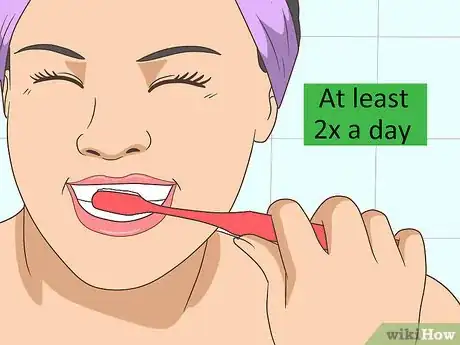
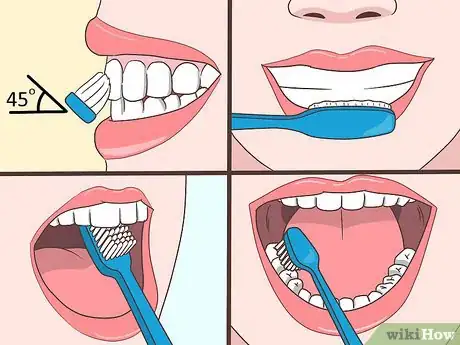
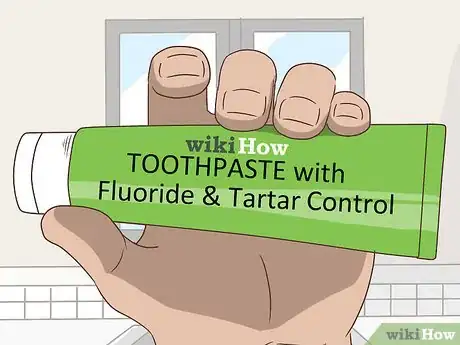
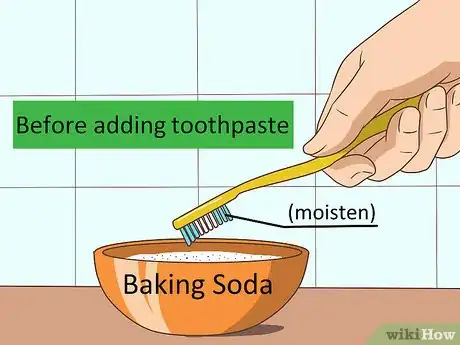
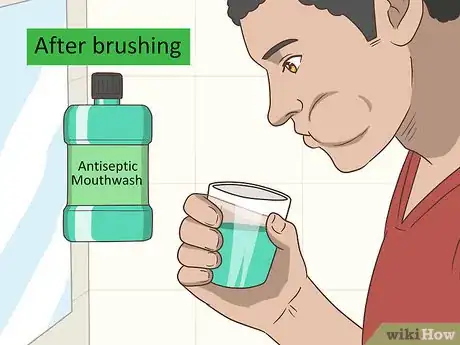
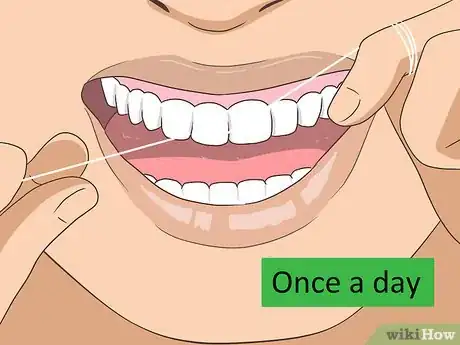
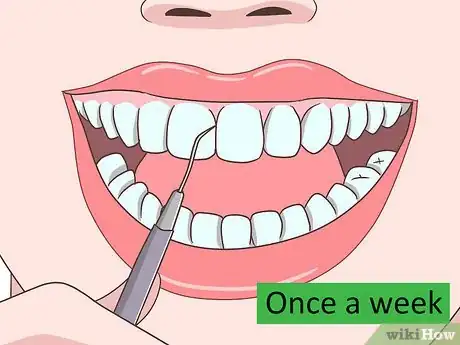
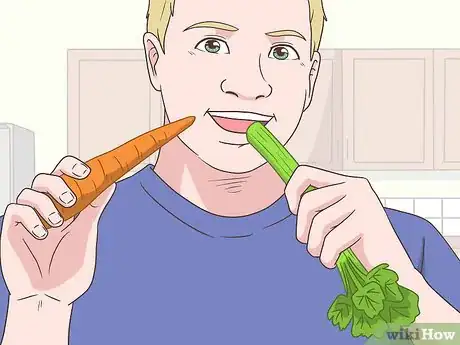
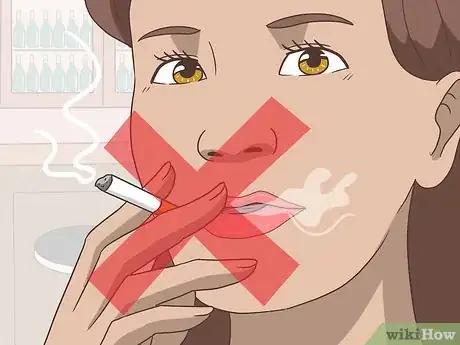
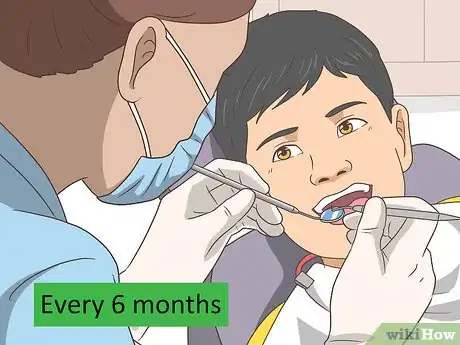

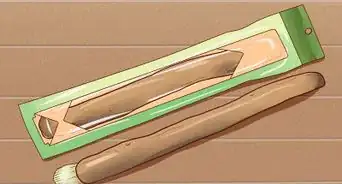
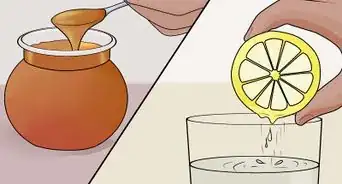

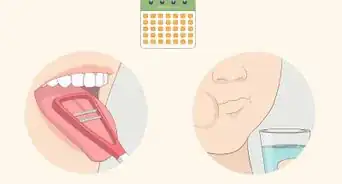
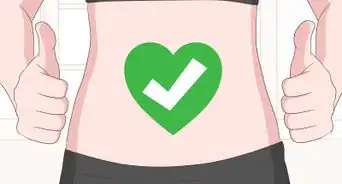
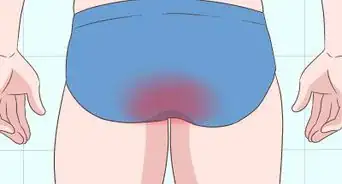
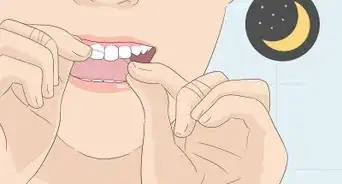
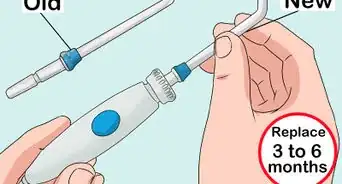
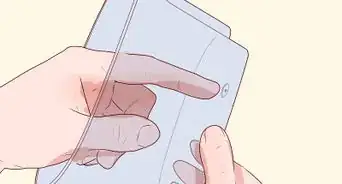
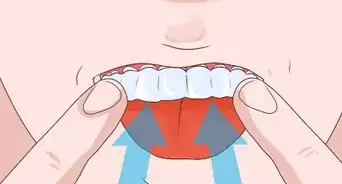
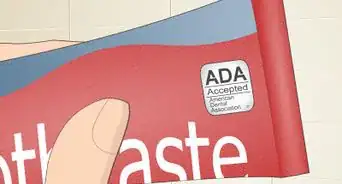
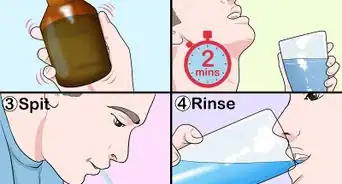








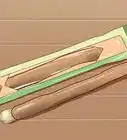
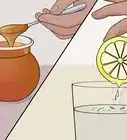




































Medical Disclaimer
The content of this article is not intended to be a substitute for professional medical advice, examination, diagnosis, or treatment. You should always contact your doctor or other qualified healthcare professional before starting, changing, or stopping any kind of health treatment.
Read More...